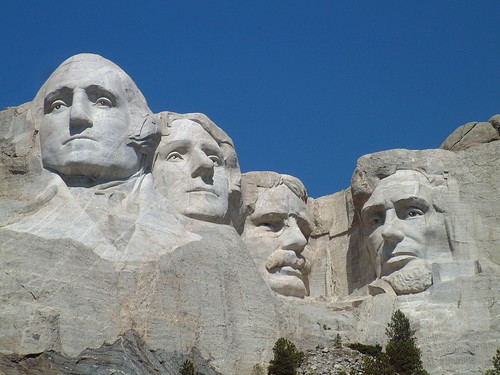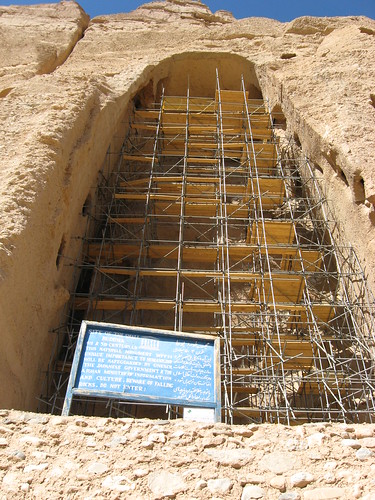A pioneering Scots team could be the answers to saving some of the world’s greatest historical monuments. The six-strong group from Historic Scotland and the Glasgow School of Art are making waves across the world, as they use cutting-edge laser technology to map world heritage sites across the globe. First up on the team’s list will be Mount Rushmore, in South Dakota, USA. And the group are confident they can use their American-made CyArk 500 scanner to model the carved faces of former presidents George Washington, Thomas Jefferson, Theodore Roosevelt and Abraham Lincoln to within 3mm. The subsequent models could then be used to help archaeologist rebuild the famous faces, should they fall victim to any further erosion of the granite rockface in which they are set.
CyArk has identified a hotlist of several ‘at-risk’ sites, including the Acropolis in Athens, which is being exposed to increasing levels of acid rain. Also on the list are Peru’s ancient city of Machu Picchu and the Maya city of Tikal in Guatemala.
Both are thought to have been permanently damaged by tourism and over-forestation. The team’s ultimate goal is to model 500 of the planet’s greatest historical sites over five years: work has already begun on the catacombs of ancient Rome, and Monte Albn in Mexico. Other ancient locations earmarked include Cambodia’s incredible Angkor Wat and the former Egyptian capitalThebes. There has already been vocal interest from several European nations keen to preserve their heritage with the team’s equipment – but the next job will be closer to home, when the group scans the Scottish Neolithic village of Skara Brae, which is at danger from encroaching tides.
International organisations first came knocking when the team demonstrated their skills on Stirling Castle and Rosslyn Chapel in Midlothian, near Edinburgh. David Mitchell, director of the technical conservation group at Historic Scotland, tells TheObserver of the moment CyArks creator Ben Kacyra first saw his team’s work: “When Ben saw the work we were doing he said we were miles ahead of anyone else and was blown away,” says Mitchell. “We have worked with Glasgow School of Art for a number of years on laser scanning and became the first group to use this technology on heritage sites. It can pick out millions of points on a monument down to an accuracy of 3mm, which has never been done before. It’s cutting-edge stuff. Working on Mount Rushmore will give us the opportunity to put Scotland on the world stage.” Once Skara Brae has been scanned, the team hope to continue mapping Neolithic Orkney, all of which faces destruction at the hands of the Atlantic Ocean. Mitchell hopes to complete a ‘Scotland 10’ before rolling the technology out across the world.
Archaeologists are already wishing CyArk could have saved some recently perished ancient treasures. And though the Japanese government are heading plans to rebuild the giant Buddhas of Bamiyan in Afghanistan – blown to pieces by the Taliban in 2001 – they admit that their task would have been made infinitely easier with the team’s 3D model. Other landmarks in danger from terrorism, natural disaster, climate change and war include China’s Longmen Grottoes and the inimitable Taj Mahal. Kacyra is delighted to have the Scots team on board for five years, and hopes the lasers can help out some of the world’s poorer nations. “I hope we can continue our collaboration beyond the Scotland 10 and CyArk 500 and eventually transfer our technology to developing countries,” he says. Of course, Scots aren’t the only experts using laser technology to map ancient monuments – a team led by Zahi Hawass have recently completed scanning the Great Sphinx and Pyramids of Giza, and have turned their sights on the tombs of Tutankhamun and co in the Valley of the Kings.

